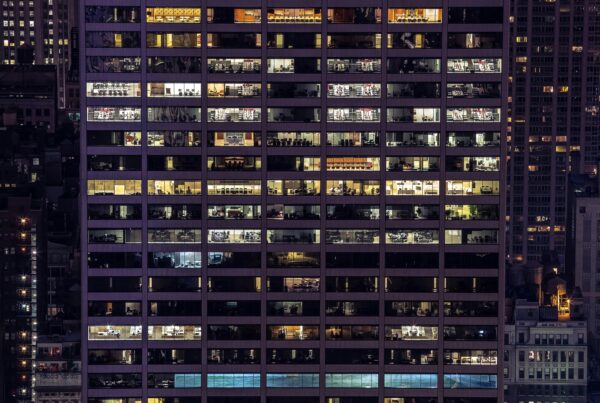Cloud Forest and Mountain Top: Proposed Garden Skyscrapers in Singapore
An ambitious fusion of nature and skyscraper is set to take place in Singapore’s Marina Bay.
German studio Ingenhoven Architects and Singapore firm A61 will be behind the skyscraper named Marina One, comprised of four high-rise buildings unified by undulating balconies inspired by Asian rice terraces.
Meanwhile, the living fabric of plants will be taken care of by London-based landscaping firm Gustafson Porter. The firm has proposed lush tiered gardens, complemented by pools and waterfalls at the center of the atrium. The two terraces at the top of the structure will be dubbed Cloud Forests and Mountain Top, which are meant not just as a relaxing haven for visitors but habitat for birds and insects as well. The entire project hopes to become the “largest green urban sanctuary within Singapore’s central business district.”
Foster + Partners’ Manhattan Residential Tower Pushes Skinny to the Next Level
In New York where land space is at a premium, skinny buildings make a lot of sense. Just ask Foster + Partners and their luxury residential tower in Manhattan, which is simply called the One Hundred East Fifty Third Street, formerly 610 Lexington Avenue.
Opening in 2017, the 63-storey skyscraper will be stand next to the classic Seagram Building by Mies van der Rohe, built in 1958. The residential tower’s brilliant white façade and glass cladding will deliberately juxtapose the Mies’ dark bronze structure. Developers are hoping the ultra-thin building’s elegant minimalism and prestige will be the main selling point. Residential units’ prices start at $3.35 million.
New images released of Foster’s super-skinny New York skyscraper
Sagrada Familia Will Finally Be Completed By 2026.
Barcelona, Spain’s iconic basilica La Sagrada Familia, which has been under construction for over a hundred years, is finally set to be completed. The target date of Chief architect Jordi Fauli is 2026, to coincide with the 100th death anniversary of the basilica’s original architect, Antoni Gaudi.
Gaudi, who was run over by tram in 1926, had famously remarked, “My client [God] is not in a hurry.” When he died, only 15 to 25{e3829ec1db02d54faaf9fa2de0d48db26af01d7a7944a63c3b26976124791cab} of the building was completed. Since then, various architects have taken over the project, working with various reconstructed versions and even computer-aided plans for the building. This final stage of completion is set to add six additional spires, with the sixth measuring more than 172 meters and making the basilica the tallest religious structure in all of Europe.
Sports and Sustainabilty: The AmericanAirlines Arena
Sports and Sustainabilty aren’t exactly mutually exclusive concepts; the two just haven’t been paired up as much as they should be.
That’s changing though through efforts by Green Sports Alliance, a non-profit organization that makes sure best practices on sustainability happen across the US, in various tracks, stadiums, or arenas, whatever the sport may be.
A prime example is the AmericanAirlines Arena, a 19,600-seat stadium which was the first ever NBA facility to receive LEED Gold recertification. Among the venue’s eco-friendly practices are recycling, energy tracking, water-saving features, use of non-toxic cleaning products, micro-irrigation systems, as well as a feeding program for homeless people using unused food from Miami Heat’s home games. It also helps that the arena is situated near the public transportation. Future projects for the venue include car-charging stations in the parking lot and a 24,000-square-foot solar canopy.
Sustainability director for the Heat Group Jackie Ventura, in an interview by USGBC, challenges everyone: “If we can do it here, in a 1.2 million-square-foot arena, with 1.6 million people through our doors every year, there’s no reason why you can’t implement a fraction of what we’re doing in your 2,000-square-foot home.”
Sustainable Business Park Underway at the Shanghai Honqiao Airport
Because sustainability is at the heart of most construction projects in China today, Shanghai’s Honqiao Airport is gearing up for a business park with eco-friendly features. The project headed by Netherland-based architecture firm MVRDV for Sincere Property Group is a sprawling space meant for offices, retail stores, and parking.
A total of ten buildings are proposed, each one topped with green roofs. Other sustainable features include optimised self-shading forms, high-performance insulation, natural ventilation, stormwater collection, permeable road and parking surfaces, as well as ample links to public transport. The project is gearing up for a 3-star Green Building Label, the highest in China’s homegrown green building rating.












